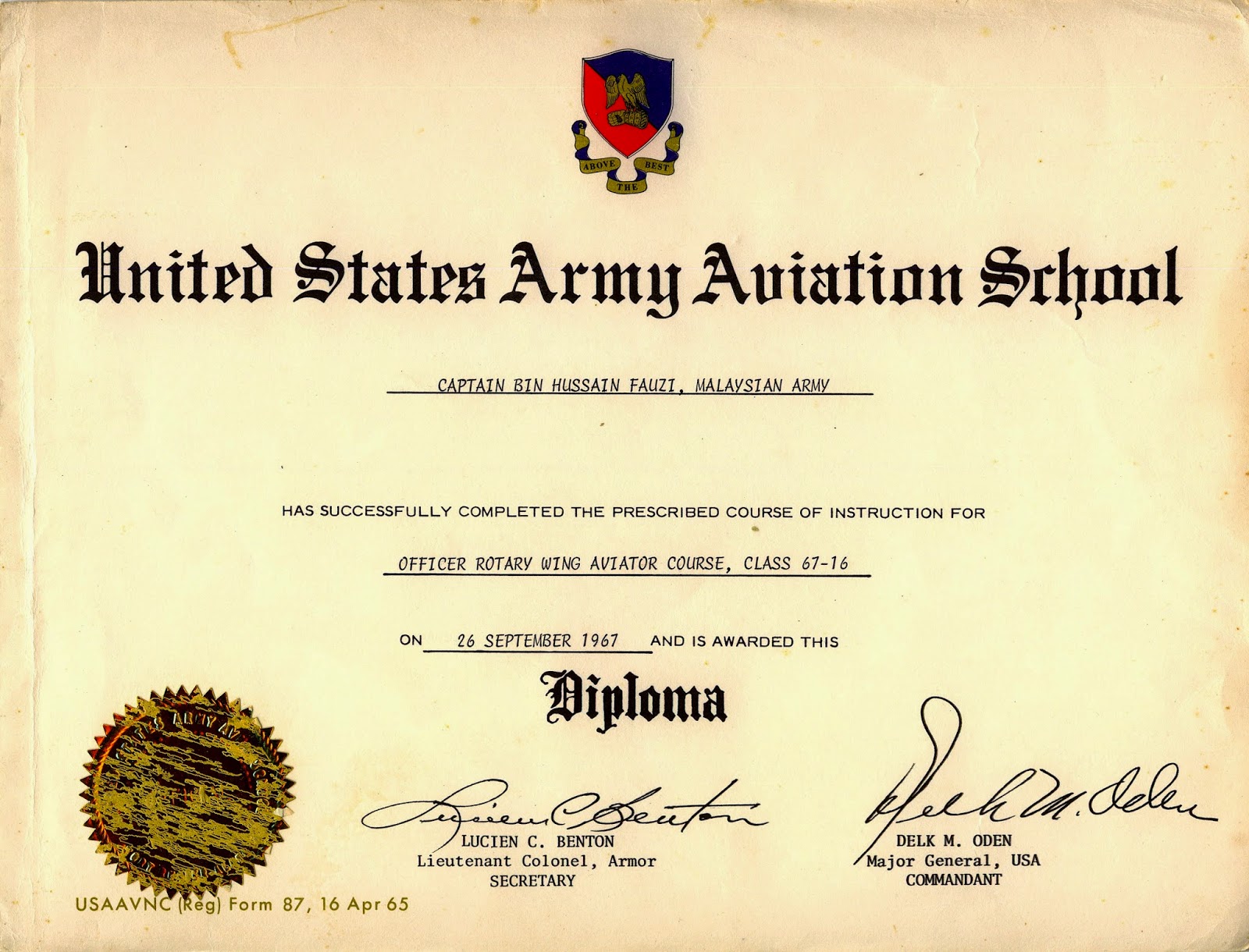Readers....Malaysian government signed a contract with Sikorsky Aircraft Corporation for the procurement of 10 Nuris in 1967. The first batch of 3 Nuris arrived at Port Swettenham in January 1968. During this period, the RMAF was expanding by leaps and bounds. New flying assets were either procured or given FOC. As a result, the Flying Training School, RMAF Alor Setar, was unable to churn out enough pilots to man those wonderful flying machines.
One of the ways to overcome this manpower shortage was to invite army officers to join the air force as helicopter pilots. The successful candidates were sent to Uncle Sam for training. Throughout the period 1967-1969, 7 army officers answered the challenge and were sent to Fort Walters and later to Fort Rucker.
Capt Fauzi Hussain was one of them (retired Maj Gen Dato' - Deputy Air Force Chief).
I'm very fortunate that Dato' Fauzi was willing to share his experiences during his flying training days.
Fauzi Hussain –
heli flying trg in the US

During the year of 1965 and 1966, the Government
conducted very intensive ground operations against the Communists Terrorists
along the Thai-Malaysian border.
Because of this, the RMAF was hard pressed
to support the Army units in carrying out their ground operations as there was
not enough aircraft /helicopters and pilots. To
cater for this shortfall, government ordered a squadron of new S 61 Nuri
helicopters (18 aircrafts) from the US. As for the pilot, the RMAF decided to
recruit them from the teeth arm of the army (infantry, arty, engineers,
Rangers) to be sent to the USA for helicopter training.
Many officers from the army volunteered. The criteria for selection was that the
officers must be of Captain rank, have passed their Lt to Captain promotion
examination and medically fit. They have to undergo the air aptitude test and
medical examination. Those who passed were sent to United States Army Helicopter Training School, Ft Wolters, Texas for
basic helicopter training. This first phase of training lasted for 5 months.
After passing my medical and aptitude test
conducted by the RMAF, on 1st Jan 1967, I went to the US Army
Aviation Flying Training School in Fort Wolters for my basic training and Ft
Rucker for my tactical flying phase.
In front of our BOQ – Jan 1967
When I went for the helicopters training I
was already a Captain with 4 years seniority in the rank, I was only made a
squadron leader on 21st Sept 1970; after been a captain for more
than 7 years. I was forgotten by the army because I was serving with the air
force and I was not planned for promotion by the air force because I was from
the army.
Malaysian trainee pilots from left Fg Offr Peter Wong, Capt Mahmood Zain, Fg Offr Steven Ngiau TK, Capt Fauzi, Capt Hanafi, Capt Ahmad Azizah
I was in the third batch to be sent for the
training. Before me were Capt Mahmood Zain (died in a helicopter accident at
Bintulu, Sarawak) and Capt Ahmad Azizah Zain, both from the Royal Malay Regiment.
The 2nd batch consisted of RMAF officers, Flying Officer Steven
Ngiau and Flying Officer Peter Wong. These two officers were already qualified
pilots on fixed wing and were sent to be US to be converted to helicopter
flying.
My batch
consisted of Captain Hanafi Mahmood and me.
With Capt Hanafi
On a mock up of OH 23 D
Flying discipline was strict during this time. In the 1960s, the Vietnam War was at its
height and a lot of casualties were suffered by the US ground troops especially
the infantry (the grunts), the helicopters and their pilots.
Every month about 200 pilots passed out
from this school to go to the advance tactical flying phase at Ft Rucker,
Alabama.
To be continued....



















